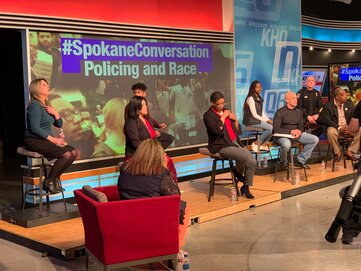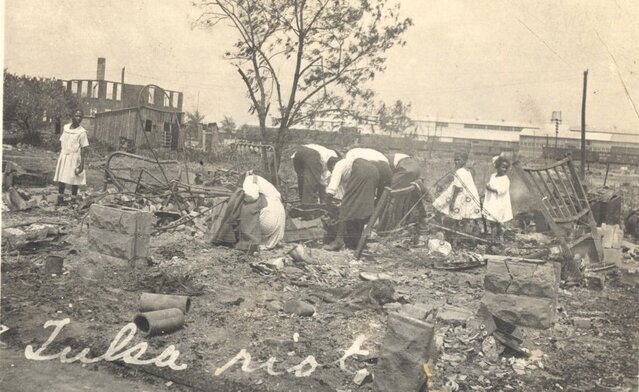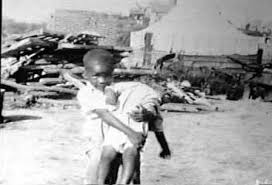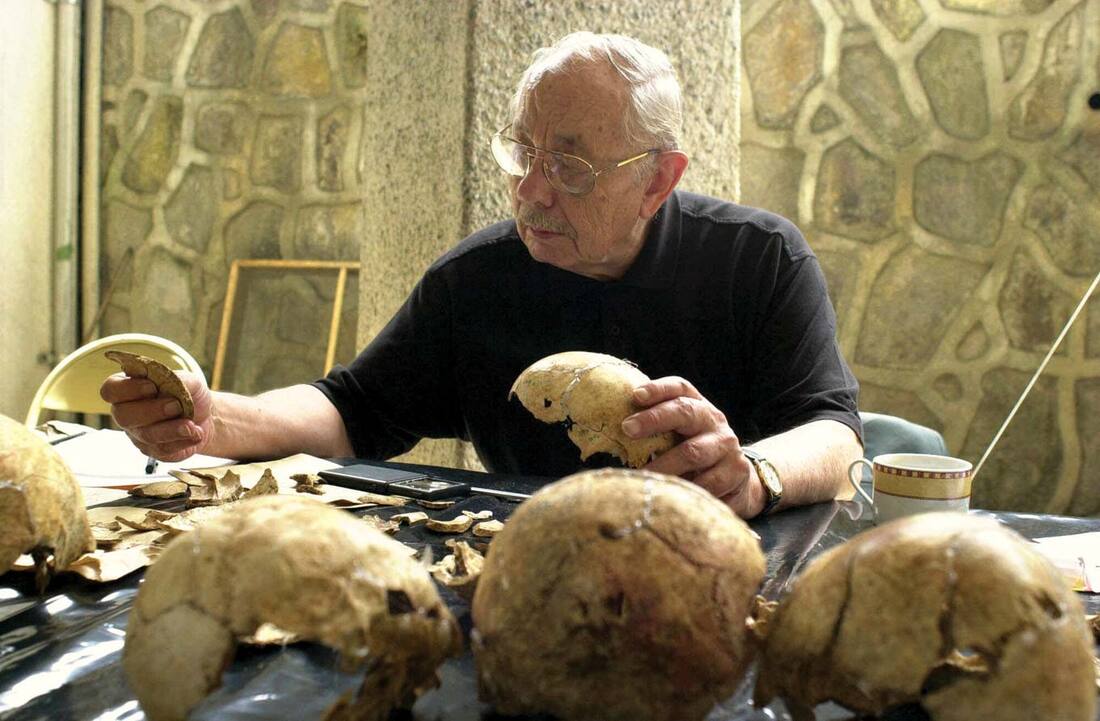|
In California Dreamin', the Mamas and the Papas sang of their longing on a winter’s day, to be safe and warm in L.A. The tune launched the group, which became a defining voice in 1960's counterculture. Say the Mamas and the Papas time-traveled to 2020 and joined #BlackLivesMatter. Might they sing a lament for California dreams dying this way? Most recently, 18-year-old Andres Guardado, killed last week by Los Angeles County Sheriff's Deputies. He was running away when he was shot dead, the third and youngest of three Latinos shot by California law enforcement this month. In the heart of sunny SoCal, a virulent history of racism casts a cold, dark shadow. Making lives matter today requires understanding this long road of injustice we've been walking. Ever hear of the Murder at Sleepy Lagoon? The 1942 case of José Gallardo Díaz? Detectives had scant evidence and the murder was never solved. But that didn't stop police from arresting nearly 600 Latino men, a jury from convicting 17 of them and a judge sentencing them to San Quentin. Read on for that story below. But first, details on the heartbreaking death of Andres Guardado.  Andres Guardado, 18, was shot and killed June 18, 2020 Photo courtesy of Noe Abarca. Andres Guardado, 18, was shot and killed June 18, 2020 Photo courtesy of Noe Abarca. "He was a baby, he was a baby," Andres' cousin Celina Abarca told CNN through her tears. "I feel like I'm dead inside," said his mother Elisa Guardado. People who gathered to protest the killing on Sunday were dispersed by police using pepper spray and rubber bullets. Andres worked as a security guard at an auto body shop. Speaking to CBS LA, Andrew Heney, owner of the shop said: "We had a security guard that was out front, because we had just had certain issues with people tagging and stuff like that. And then the police came up, and they pulled their guns on him and he ran because he was scared, and they shot and killed him. He's got a clean background and everything. There's no reason." If police had bodycams running, the video has not been released. Andres' family alleges the deputy shot him in the back, but the sheriff refuses to release autopsy results for "security" reasons. According to Lieutenant Charles Calderaro, here's how the shooting went down. "Deputies observed the individual, at which point he observed the deputies. The individual then produced a handgun and began running southbound away from the deputies through businesses nearby. At some point, deputies contacted the suspect and that's when the deputy-involved shooting occurred." Bullshit. Pardon my French.  Los Angeles pachucos circa 1930, photo couresty https://therealhollywoodbandit.tumblr.com/ Los Angeles pachucos circa 1930, photo couresty https://therealhollywoodbandit.tumblr.com/ Today the U.S. president uses various derogatory names for immigrants from south of the border. In the 1940s, they were simply referred to as “the Mexican problem.” But young Chicano men in the border states baptized themselves pachucos. In Los Angeles they dressed to stand out, wearing zoot suits featuring wide lapels and baggy pants pegged at the ankles. Pachucos rejected assimilation into Anglo-American culture speaking their own slang derived from the Calo gypsy language of El Paso. The resisted prejudice and inequality with their unique style of jazz and swing music. Yes, they had attitude. The pachucos subculture defied American racism and oppression. In 1942-43 some pachucos refused to yield to whites on the sidewalks and tried to bar them from their neighborhoods. Whites couldn't understand pachucos "secretive" language and grew suspicious because the pachucos didn't look and behave as they should. In the eyes of white citizens, they were trouble. Police believed the zoot suiters were gang members and trouble-makers. L.A. officials believed the "Mexican problem" had to be solved. The outbreak of WWII fired up fear and animosity that led Americans to distrust foreigners. Many experienced LA cops had gone off to war leaving locals uneasy about their safety. In the fall of 1942, the “Mexican problem” appeared to be the only story newsworthy enough to make the front page alongside war updates in Los Angeles newspapers.  22-year-old José Gallardo Díaz 22-year-old José Gallardo Díaz The death of a young Chicano man reported on August 2, 1942, in Commerce, California, created an opportunity for local law enforcement to crack down on the pachucos. Apparently, a fight had broken out at a birthday celebration near a swimming hole known as Sleepy Lagoon. A party guest José Gallardo Díaz was found unconscious along side the road near the reservoir and abandoned gravel pit near Slauson and Atlantic boulevards. An ambulance rushed Díaz to hospital, but the 22-year-old died without regaining consciousness. An autopsy showed that he had been drinking heavily and suffered a fracture at the base of his skull. There was no evidence that proved what caused the fracture, which could have been the result of Díaz falling and hitting his head, or an automobile accident. Police swept through the Mexican American community, rounding up some 600 young men on charges related to Díaz' death. The way the newspapers told it, "the Mexican problem" had incited a juvenile gang war and the "Sleepy Lagoon Murder." According to court records many of the pachucos taken into custody were severely beaten by police. Los Angeles citizens and government officials wanted action to curb the alleged violence. A grand jury assembled to interview hundreds of Mexican-American teens and young adults, both witnesses and accused. In addition, county sheriff’s officers defined the problem as they saw it, submitting a report to the Grand Jury titled "Statistics." Capt. Edward Duran Ayres wrote the law enforcement document beginning with how Latino youth faced discrimination, lack of educational opportunity and poor job prospects. But Ayres concluded his report with a nasty, racist attack on Chicano people in their entirety. Latinos were a different breed, he wrote, whose ancestors crossed the ice bridge from Asia to settle North America. Ayres continued, “The Indian, from Alaska to Patagonia, is evidently Oriental in background – at least he shows many of the Oriental characteristics, especially so in his utter disregard for the value of life.” Even so, police had to cut loose hundreds of the young men they had arrested. The County Grand Jury indicted 23 youths for the alleged gang murder of José Díaz. Prosecutors charged 22 of the young men in the largest murder trial in California history. Presiding was Judge Charles Fricke, known as "San Quentin” Fricke, due to his propensity to sentence defendants to the state's high-security prison. In the People v Zammora, part of the prosecution's case rested on the “distinctive appearance” of the accused, arguing that their fondness for fashion and taste for jazz proved their social deviancy. After the four-month trial, the jury found 17 of the young men guilty: three of first degree murder, nine of second degree murder and five of assault with a deadly weapon. Their sentences ranged from life in prison to one year in the county jail. Five were found innocent. The defendants appealed their verdicts and two years later the appellate court threw out all 17 of the convictions, citing lack of evidence, coerced testimony, deprivation of the right to counsel and judicial misconduct. All accused were released.  Henry Leyvas, 21, and Gus Zammora, 22, two of the eight youths who were released from the County Jail, Monday, October 29, 1944 with all charges dismissed, after serving two years on conviction in the "Sleepy Lagoon" murder, are shown as they were greeted by relatives and friends. Left to right, Mrs. Lupe Leyvas, Seferino Leyvas, Henry Leyvas, Alice Greenfield, Gus Zammora and Ruth Amparay. LOS ANGELES PUBLIC LIBRARY HERALD-EXAMINER COLLECTION Interesting to note, of the 10,000 people arrested across the nation during protests against police brutality in the wake of George Floyd's killing, Los Angeles led all cities in the number of people arrested. More than a quarter of the arrests came in the City of Angels, many for low-level offenses like curfew violations and failure to disperse. Back to the police shooting of 18-year-old Andres Guardado. The Los Angeles County Sheriff promises "transparency". He invited California's attorney general to oversee the his department's internal investigation. Nu-uh! says the LA County Supervisor, mentioning a "trend" in the sheriff's office not to cooperate with outsiders looking into its business. The case needs an independent inquiry into Guardado's death. Let's hope it happens. Another Latino man shot by California police earlier this month was kneeling with his hands above his waist when he was killed.  Sean Monterrosa was killed by Vallejo police, photograph courtesy of Melissa Nold. Sean Monterrosa was killed by Vallejo police, photograph courtesy of Melissa Nold. An officer in Vallejo responding to a looting call shot 22-year-old Sean Monterrosa. He fired five times at Monterrosa through the windshield of his unmarked police car, saying he thought Monterrosa had a gun. Family and supporters of Monterrosa have demanded that authorities release body camera video of the shooting. They refuse. The police union has now filed for a restraining order to block release of the name of the officer who fired the shots. Four days after Monterrosa died, California highway patrol officers opened fire on the car Erik Salgado was driving in east Oakland, killing the 23-year-old and injuring his pregnant girlfriend. CHP says officers suspected a stolen vehicle and attempted to make a traffic stop, but that Salgado started ramming CHP vehicles. In response, officers fired three shots. Salgado, who was unarmed, died at the scene. His pregnant girlfriend, shot in the stomach, was taken to the hospital. She survived, but miscarried the baby. All three of these men killed by California law enforcement in the last four weeks were suspected of property crimes. #Black, #Latino and #Native lives matter. These young men of color deserve to be safe in California and alive to pursue their dreams.  There's a book detailing the 1942 Sleepy Lagoon murder case. More than a courtroom drama, The Sleepy Lagoon Murder Case by Mark A. Weitz is a study of race discrimination and the Mexican American struggle for equal rights. According to the publisher, as the case unfolded, the prosecution and local media drew ominous comparisons between the supposed dangers posed by the Mexican-American defendants and the threat allegedly posed by thousands of Japanese Americans, whose sympathies had been called into question after Pearl Harbor. Weitz shows how Zammora demonstrates what it is like to literally be tried in the court of public opinion where the "opinion" has been shaped before the trial even begins. Sources: https://www.newsweek.com/los-angeles-shooting-police-andres-guardado-gardena-1512057 https://www.npr.org/2020/06/05/871083536/police-kill-a-latino-man-in-california-admit-he-didnt-have-gun https://www.sbsun.com/2013/05/31/zoot-suit-riots-the-sleepy-lagoon-murder-case-that-helped-spur-the-wwii-era-los-angeles-race-riots/ https://news.yahoo.com/probe-demanded-over-latino-police-shooting-death-los-015002720.html https://www.gwinnettdailypost.com/news/world_nation/an-18-year-old-latino-man-shot-and-killed-by-a-los-angeles-county-sheriffs/article_b5e3d699-edaa-5c08-b3ed-aced5e47c43e.html https://www.insider.com/over-10000-arrested-us-george-floyd-police-brutality-protests-ap-2020-6 https://www.theguardian.com/world/2020/jun/12/latinos-police-brutality-protests-george-floyd
0 Comments
This week we had a community conversation about race and policing in my city, Spokane, Washington. I have a couple take-aways. Our mayor and police chief are nice people. But as blacks on the panel spoke about the dangers of living-while-black in Spokane, city leaders spoke about what they've been doing to improve the situation and how, yes, they need to increase those efforts.  Photo courtesy KHQ News Photo courtesy KHQ News They showed no understanding of the need for structural change. They showed no understanding of white privilege. One point brought up several times by the local leader of the NAACP, is the need to understand our history. To create structural change and a just future, we need to be clear about our past. I jumped right on that. You know I believe this. That is a huge part of why I write this blog. One city that demonstrates this need to recognize that history matters and why structural change is needed: Tulsa, Oklahoma. If you've heard of the 1921 "race riot" in Tulsa, wipe your mind clear. It was a massacre. Human Rights Watch released a 66 page document this past week demanding reparations for survivors and descendants of those caught in the 48-hour reign of terror in Tulsa. Reign of Terror In segregated, Jim Crow Tulsa, the Greenwood district, known as "Little Africa" grew into one of the most economically vibrant black communities in the U.S. Thriving businesses lined its streets: banks, movie theaters, hotels, beauty shops, grocery stores, restaurants, as well as the offices of lawyers, realtors, doctors and other professionals. Known across across the country, as "Negro Wall Street", the entire 35-square blocks including more than 12-thousand homes burned to ashes in two days, May 31-June 1, 1921. An estimated 300 black people were killed.  The murder and devastation was deliberate, sparked by accusations that a black man assaulted a white woman. According to witnesses, white mobs looted black homes and businesses before setting them ablaze. “They tried to kill all the black folks they could see,” survivor George Monroe, recalled. Law enforcement did nothing to stop the violence. In fact, witnesses say some officers participated in the looting and killing, including members of the Oklahoma National Guard. Survivors told of seeing black bodies dumped into the Arkansas River and disposed of in mass graves. “Many of the survivors mentioned bodies were stacked like cord wood,” says Richard Warner of the Tulsa Historical Society.  The fires left 10,000 homeless, subsisting in tents provided by the Red Cross. Incredibly, the black community of Greenwood regrouped, rebuilt, and restored their neighborhood by 1938. That despite the fact that insurance companies refused to compensate home owners and business for their losses. Not a single person was ever held responsible for the murders and property damage. White Tulsans chose to pretend it never happened, actively suppressing the truth. Even privately, they did not speak of it. Newspapers of the time grossly under-reported the death tally, claiming 36 blacks died. Textbooks omitted this history completely. Then after 77 years, evidence of the massacre started to surface. The Oklahoma Legislature appointed a commission to establish an historical record of the event. The commission brought in an expert to investigate possible sites where black bodies might have been buried. Clyde Snow liked to say bones make good witnesses, never forgetting and never lying. Before his death in 2014, Clyde Snow was one of the world's foremost forensic anthropologists. He helped identify the remains of Nazi war criminal Josef Mengele and confirmed the identification of President John F. Kennedy after his assassination. He aided in the determination that more than 200 victims found in a mass grave in Yugoslavia had been killed in an execution style of ethnic cleansing. In Tulsa, Snow investigated ground that had been a potters field in 1921. It was the suspected site of a mass grave where black bodies might have been buried after the massacre. Using ground-penetrating radar, the forensic anthropologist discovered an aberration in the earth, which the commission report stated "all the characteristics of a dug pit or trench with vertical walls and an undefined object within the approximate center of the feature." In addition, a witness came forward, a white man named Clyde Eddy who'd been 10 at the time of the massacre. Eddy remembered seeing men dig a trench and prepare to bury wooden crates containing remains of black victims. Clyde Snow drew parallels between the violence in Tulsa and state-sponsored killings he investigated in other countries. The commission's evidence led him to believe the so-called Tulsa "riot" was an act of ethnic cleansing facilitated by the Oklahoma National Guard. In 2000, the Tulsa Race Riot Commission made a number of recommendations for moving forward, including further investigation of possible mass grave sites and cash reparations to survivors (149 were alive at the time) and descendants of those killed and of survivors. The only action taken was by the State of Oklahoma which issued survivors decorative medals. Now, twenty years later it's possible Tulsa can begin to address its racist history. This last December archaeologists discovered further evidence of possible mass graves at two sites in the city. Excavations were to have started in February, but have been postponed due to COVID-19.  Child survivor of 1921 Tulsa Massacre Child survivor of 1921 Tulsa Massacre And coincidentally with nationwide "Black Lives Matter" protests, Human Rights Watch issued a news call for reparations for blacks in Tulsa. Human Rights Watch is a non-governmental organization that conducts research and advocacy on human rights around the world. “No one has ever been held responsible for these crimes, the impacts of which black Tulsans still feel today,” says the report, titled “The Case for Reparations in Tulsa, Oklahoma: A Human Rights Argument.” “Efforts to secure justice in the courts have failed due to the statute of limitations. Ongoing racial segregation, discriminatory policies, and structural racism have left black Tulsans, particularly those living in North Tulsa, with a lower quality of life and fewer opportunities.” The community has higher rates of poverty and police brutality. Black Tulsans are subjected to physical force by police — tasers, police dog bites, pepper spray, punches, and kicks — 2.7 times more than whites, according to Human Rights Watch. Today, the area once known as Black Wall Street is marked by a mural painted on the side of Interstate 244, which bisected the neighborhood in 1970. While traffic roars through on the interstate, gentrification creeps into Greenwood. There's a minor-league baseball stadium, an arts district marketed to millennials, and a high-end apartment complex with a yoga studio and pub. City Councilor Vanessa Hall-Harper says gentrification of the neighborhood is driven by the same greed that fed the fire of white violence 100 years ago.  "There was economic jealously that caused them to destroy Greenwood...The stadium is like building a Whole Foods at the site of the Oklahoma City bombing." "This is sacred ground," Hall-Harper said. "As developers are making decisions about the Greenwood district, the history is being ignored, and I think it is intentional. They want to forget about it and move on." Not only forget, but whitewash. Near the baseball stadium's entrance, the mural is signed "Tulsa Race Riot 1921." Someone has crossed out "riot" and written "massacre." Someone else has crossed out "massacre" and left a scribble of black spray paint.  livia Hooker, the last known survivor of the 1921 racist attack in Tulsa, died two years ago at 103. She was six 6 when the violence erupted, but never forgot how her mother told her and her three siblings to hide under their dining room table. "She said, 'Keep quiet, and they won't know you are under here.' The [whites who came in her house] took everything they thought was valuable. They smashed everything they couldn't take," Hooker said. This past week, Oklahoma offered a panel discussion on race, facilitated by Governor Kevin Stitts and his wife. Black leaders criticized the governor for stacking the panel with folks who would not challenge him on his racial beliefs and biases, calling the event a "superficial show of solidarity." Two of the four panelists were law enforcement officers. There were no women, no Latinx or indigenous Oklahomans, no millennials, and no recognizable black activists or leaders from social justice groups. At the panel in Spokane, the police chief made a point of saying his officers are good, caring people, and that George Floyd was killed in Minneapolis, not here.
What he fails to understand is that "good" isn't good enough. Being "not guilty" of killing a black man is not good enough. Claiming not to be a racist is not enough. That's why we're hearing the term anti-racist. Being anti-racist requires recognition of the privilege bestowed on us simply because we were born with white skin, reckoning with the fact that racism is systemic and taking action. We can't sit on one side of the scale of justice and expect it to level on it's own. We must involve ourselves intentionally in day-to-day efforts to dismantle the racist structures in our schools, our cities and our country. If not engaging, we are automatically, by default, perpetuating the problem. Sources: https://thislandpress.com/2011/06/11/what-lies-beneath/ https://abcnews.go.com/US/tulsa-marks-grim-anniversary-1921-race-massacre-protests/story?id=71010791 https://ktul.com/news/local/tulsas-dark-secret-the-mass-graves-of-the-1921-race-riot https://theblackwallsttimes.com/2020/06/08/bwstimes-gives-gov-kevin-stitt-2-out-of-10-on-race-conversation/ https://www.sapiens.org/news/tulsa-race-massacre/ https://www.hrw.org/news/2019/09/12/us-how-abusive-biased-policing-destroys-lives https://www.washingtonpost.com/local/tulsa-mayor-reopens-investigation-into-possible-mass-graves-from-1921-race-massacre/2018/10/02/df713c96-c68f-11e8-b2b5-79270f9cce17_story.html |
I'm fascinated to discover little-known history, stories of people and events that provide a new perspective on why and how things happened, new voices that haven't been heard, insight into how the past brought us here today, and how it might guide us to a better future.
I also post here about my books and feature other authors and their books on compelling and important historical topics. Occasionally, I share what makes me happy, pictures of my garden, recipes I've made, events I've attended, people I've met. I'm always happy to hear from readers in the blog comments, by email or social media. Archives
September 2023
Categories
All
|








